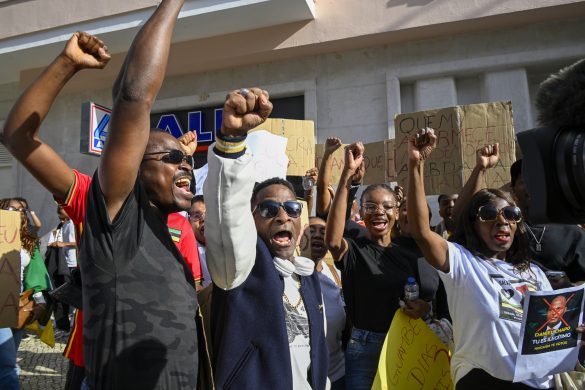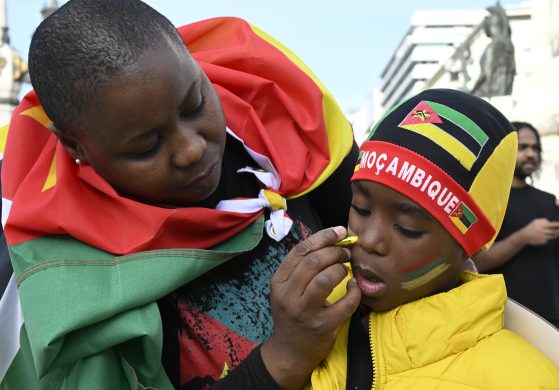En folkeafstemning, der så ud som en fredelig udgang på årtiers borgerkrig i Sudan, virker mere og mere skrøbelig. Hverdagen præget af stigende vold og politisk manipulation.
Folkeafstemningen 9. januar skabte håb om fred i Sudan, som gennem årtier har været plaget af borgerkrig. Afstemningen fik tusinder til at vende tilbage til Syd Sudan og førte til næsten enstemmighed om at dele landet i to.
Den officielle side af det dækker dog over en dyster virkelighed.
Herunder en tidslinie over udviklingen i Syd Sudan i følge IRINnews:
7-9 January: Dozens are killed in clashes between migratory Misseriya Arab nomads from the North and settled Ngok Dinka residents in Abyei, a semi-autonomous region, most of whose permanent inhabitants supported the South during Sudan’s civil war. Delays in a separate referendum on Abyei’s political future remain a source of tension.
4-5 February: Fighting breaks out between factions of the North’s Sudanese Armed Forces (SAF) stationed in the flashpoint southern town of Malakal with elements of the southern Sudan People’s Liberation Army (SPLA) after the refusal of some SAF elements recruited from militia groups to hand over heavy weapons ahead of their planned redeployment to the north. The fighting spreads to other areas of Upper Nile state, where other SAF units are stationed. More than 60 SAF soldiers are killed.
7 February: Official results of the referendum announced in Khartoum. More than 98 percent of southerners voted for independence, according to the Southern Sudan Referendum Commission. Results are immediately accepted by President Omar el-Bashir’s National Congress Party, while southern president Salva Kiir counsels his people to avoid pre-emptive celebrations.
9 February: A minister in the southern government is shot dead by one of his in-laws in his office in Juba, the southern capital. The crime highlighted the issue of lax security in southern government offices and the widespread phenomenon of weapons in the hands of civilians.
9-10 February: Fighting between the SPLA and rebels loyal to renegade SPLA commander George Athor breaks out in the northeastern corner of Jonglei state, marking the de facto breakdown of a 5 January ceasefire between the two sides. Southern army officials initially report 105 people, mainly civilians, killed in the clashes, but the death toll later spikes after more civilian casualties are reported from the town of Phom el-Zeraf, where scores of civilians died when they fled into the river as Athor forces shot at them.
14 February: A skirmish in Abyei market between police and soldiers serving in a joint SAF/SPLA security unit leaves three dead and forces 300 civilians – mostly northern Sudanese traders – to seek refuge inside the UN peacekeeping mission’s compound.
27 February: At least 10 people are killed when armed militias attack the police post of Todach, in the Abyei area. Southern officials say some elements of the militia were Misseriya, but that the attack was masterminded by a Khartoum-sponsored militia, the Popular Defence Forces.
27 February: Fighting resumes in Jonglei between Athor’s rebels and the southern army. Access restrictions make independent verification of widely varying casualty figures impossible. Athor said 110 people died in the fighting, mainly southern soldiers but also 12 civilians, while the southern army spokesman said about 40 were killed.
2 March: Militia forces strike again in the Abyei area, killing at least 30 people, mainly police officers, in an attack on a single town. Satellite images later show hundreds of dwellings burned out.
3 March: Fearing further attacks, between 20,000 and 25,000 residents of Abyei town – mostly women and children – flee south, leaving the town half empty and largely shutting down trade in the markets.
6 March: A clash between the southern army and a rebel known as Captain Olonyi north of Malakal leaves more than 60 dead, including women and children supporting Olonyi, according to southern officials. The most powerful of the southern rebels, Athor, announces that Olonyi is serving under his command.
8 March: SPLA announces it has dislodged Athor and some of his forces from their bush hideout in Jonglei state after intense fighting. The UN peacekeeping mission confirms to media sources that southern officials have declared the affected region a no-go-area, and that its personnel were therefore unable to gain access.
12 March: At least 42 people are killed in an overnight raid on Malakal led by Olonyi. The SPLA says it repulsed the attack by mid-morning, but a subsequent “mopping-up” operation causes further casualties as rebels hiding in the town are forced out. More than 100 orphans are temporarily held hostage during the fighting and later released unharmed.
13 March: Sudan People’s Liberation Movement Secretary-General Pagan Amum breaks off talks with the NCP over key post-referendum issues, accusing the northern government of plotting to overthrow its southern counterpart and arming militias in the South.
17 March: SPLA reports heavy fighting against a militia in the southern oil-rich state of Unity, saying more than 30 were killed.














